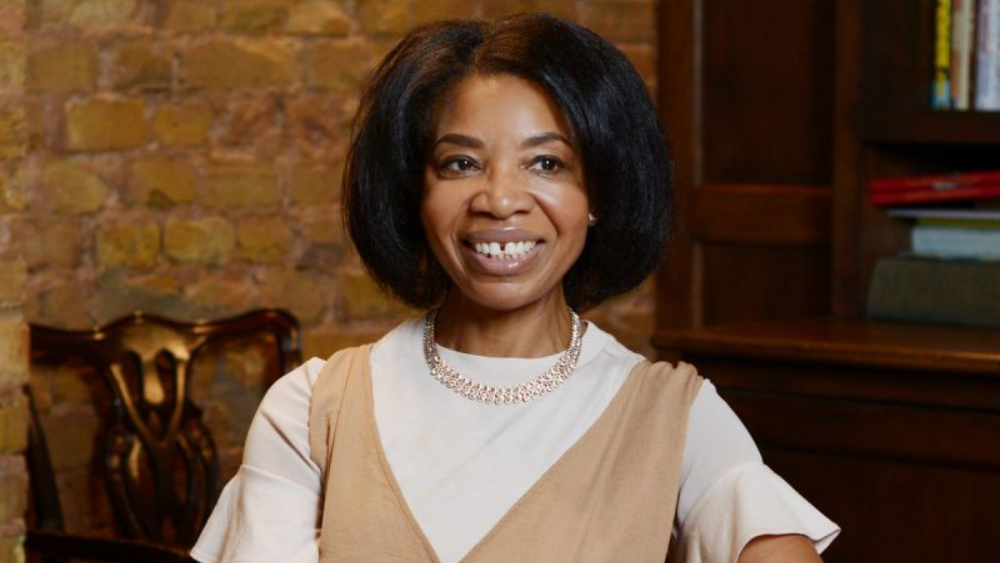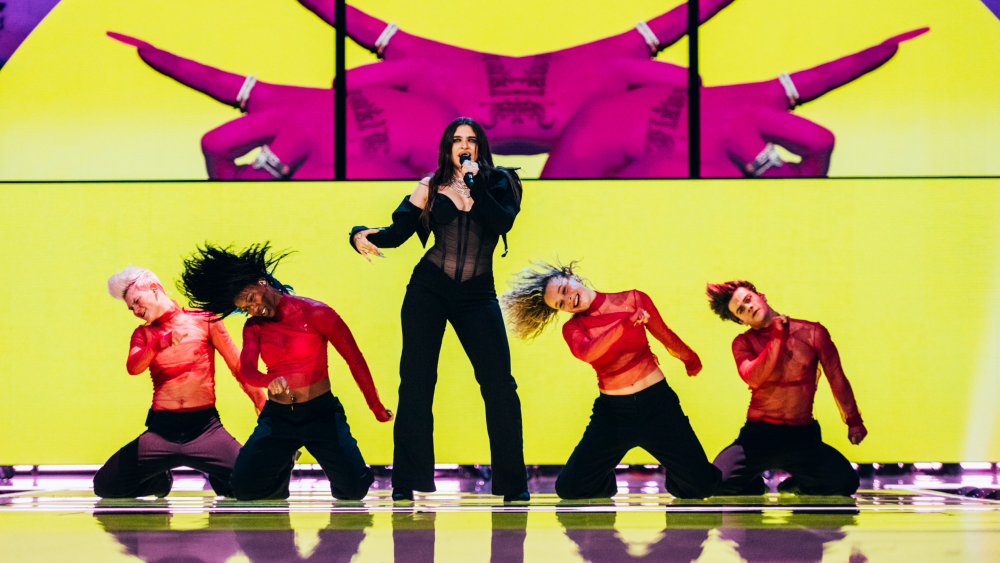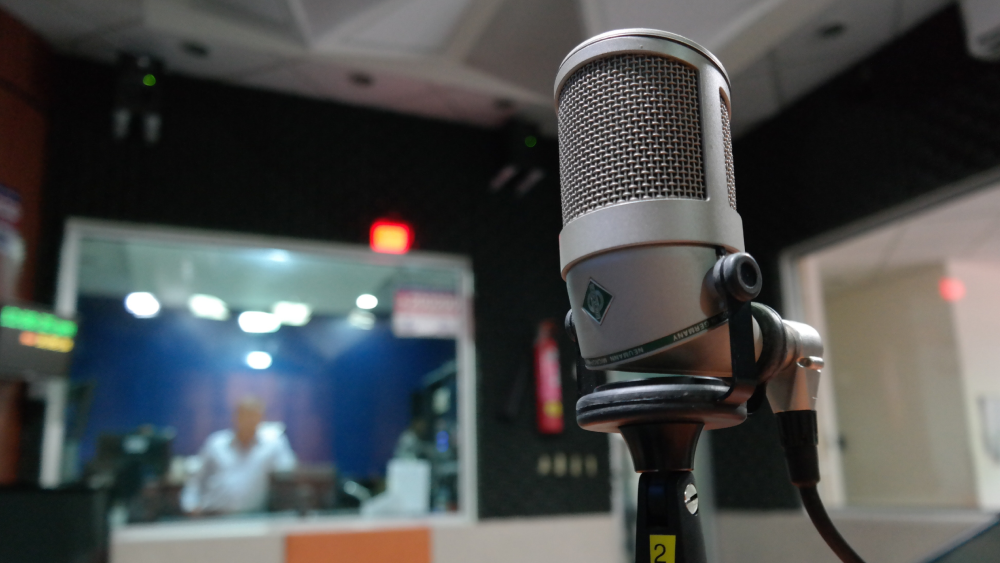‘It’s about reaching new audiences and going to places that we wouldn’t normally be showing our work and Alex wouldn’t be playing her music,’ says Semiconductor’s Ruth Jarman of their collaborative project with Eartheater.
Artist duo Ruth and Joe Gerhardt have been working together under the Semiconductor moniker for twenty years.
Their visual work primarily explores the material world and our experience of it via science and technology.
Their creations have earned them various plaudits including the Samsung Art + Prize UK 2012 for new media, the Golden Gate Award for New Visions at San Francisco International Film Festival USA 2012 and the Best Short Film Award at the International Festival of Science and Cinema, Marseille, 2013.
They have recently paired with Queens-based artist Alexandra Drewchin, aka Eartheater, for an Outlands Network commission entitled Fracture Patterns.
Outlands is a national experimental music touring network designed to support genre-resistant, adventurous, interdisciplinary work.
The Fracture Patterns project combines their large-scale multi-channel video works with an original live soundtrack and performance by Eartheater.
We caught up with the duo to get some insight into the processes and challenges of their latest commission and their take on multidisciplinary work…
What’s the thinking behind your commission for Outlands Network?
Ruth Jarman (RJ): We’ve collaborated with quite a lot of musicians in the past in different ways for our work. Sometimes commissioning musicians to make soundtracks for our work or sometimes we also work with musicians where they’ll do new soundtracks for some of our work. And in this instance, we were really keen to work with Eartheater to reinvent our work in a new way.
RJ: There’s a lot of discussions going on. In this instance I think this project has been a true collaboration, where we both met in the middle. And we’re both giving a lot to the project and putting a lot of trust into each other and opening up ourselves and the work. I think that’s coming from both ways.
At the beginning it was about understanding where each other is coming from, understanding what each other’s work becomes when the other is present in the work. So, it’s been a very intense period spending time together and then spending time away, sending things to each other and trying to get a feel for things.
Can you tell us a little about Black Rain?
RJ: There are different sections to the performance and each piece has a different name. One of the pieces of work is called Black Rain and there’s a piece we made a long time ago called Brilliant Noise. In our work we’ve always been interested in matter and the physical world and how we experience that, especially though the language of science and technology so a lot of the work that we’ve been working with has been captured through scientific methods.
There’s always an absence of man in our work and so the viewer becomes the observer, but in this case it’s really interesting because Alex (Alexandra Drewchin, aka Eartheater) comes in and she becomes the human presence. And it really transforms the work and it becomes quite powerful in how it interprets the natural physical world and the power of nature.
Joe Gerhardt (JG): The performance will consist of a series of short films, pre-existing films that we’ve mentioned and there’s also two new works, one of which where we’ve taken one of Eartheaters’ existing pieces of music called Peripheral and made new film to work with this.
We’ve also collaborated on a piece of work called Cathode Luminescence. It’s a piece of work where we’ve made a new image and she’s made new sounds. So, all the works have been reinterpreted or transformed in some way. She brings a completely unique perspective to our films. She has a very bespoke way of making music and it’s very unique, which is what we were looking for. We feel our films are very unusual and we needed something that was as strong and interesting musically and we’re hoping that in making this into a live performance it’s a different way of experiencing and being immersed into our work.
What’s your view of the role of music and sound in relation to your own visual work and how do you think that dynamic is changing or evolving?
RJ: We’ve always had a relationship between sound and image in our work. We’ve been interested in it in a very material way. I think Alex is doing something very similar with her voice, she’s not using it in a typical way or telling a story in a typical way. We liked that she was doing this very material thing with her voice.
JG: She has this interesting way of playing with her voice, a kind of naturalism. Rather than just being a vocal instrument, it became a way of experimenting with sound. It’s something that’s boundless and that’s something that we play with in our work.
JG: There’s a normal route that visual artist work with musicians and that’s to create visuals for them. This, in a way, has come about from the opposite direction whereby we have films that are already successful, existing in their own right, and then we’re bringing in a musician to collaborate. So, it’s a different route where we’re on a much more equal footing with one another.
It’s important for us that the films are seen as being central to the experience and not just an accessory. This is untrodden ground in a way for Alex and for us to work in this way where we build equal trust in one another.
What are the advantages of multidisciplinary work?
RJ: We’re always interested in pushing our practice and taking risks and experimenting. I guess this is one of those projects where we couldn’t know exactly how the collaboration would work, how it would go, how the project would end up. But we enjoy risk taking in our work and enjoy the journey and enjoy seeing how the shared language evolves.
JG: We wanted to make sure there was space in this project for Alex to be herself and to make music that is more than just a soundtrack, so it’ something where she carries her own presence and her own weight, and hopefully we do as well.
How have the public spaces that this project will be performed in come into play in the creation of it?
RJ: I guess we’re thinking about the work as quite intimate and physical and overwhelming, and the spaces that we’re working with are similar, these kinds of intimate spaces. There’s a way that we’re installing the screen set up and projectors. They’re all around the people and part of the same space, so there’s no separating out of performer, artist and audience. They all become one thing.
That do you hope to achieve with the project and what’s your take on the wider work Outlands is doing as a touring network?
RJ: I think it’s been an amazing creative journey. That’s been really important for us – to do a really intensive, creative project that challenges us in new ways. Also, it’s about reaching new audiences and going to places that we wouldn’t normally be showing our work and Alex wouldn’t be playing her music.
For the project as a whole it would be really amazing at a festival or something to have all of these projects side-by-side, because they explore these new territories in different and interesting ways.
Upcoming Fracture Patterns dates:
13 June – De La Warr Pavilion, Bexhill tickets
14 June – MK Gallery, Milton Keynes tickets
15 June – Arnolfini, Bristol, promoted by Qu Junctions tickets
16 June – KARST, Plymouth tickets
17 June – Cre8 Studio Hackney, London, promoted by 33/33 tickets
18 June – Cambridge Junction, Cambridge tickets
20 June – Niamos, Manchester, promoted by Fat Out tickets
21 June – Fuse Art Space, Bradford tickets
22 June – Birmingham, promoted by Supersonic Festival tickets
www.outlands.network
Photo Credit:Caleb Madden




